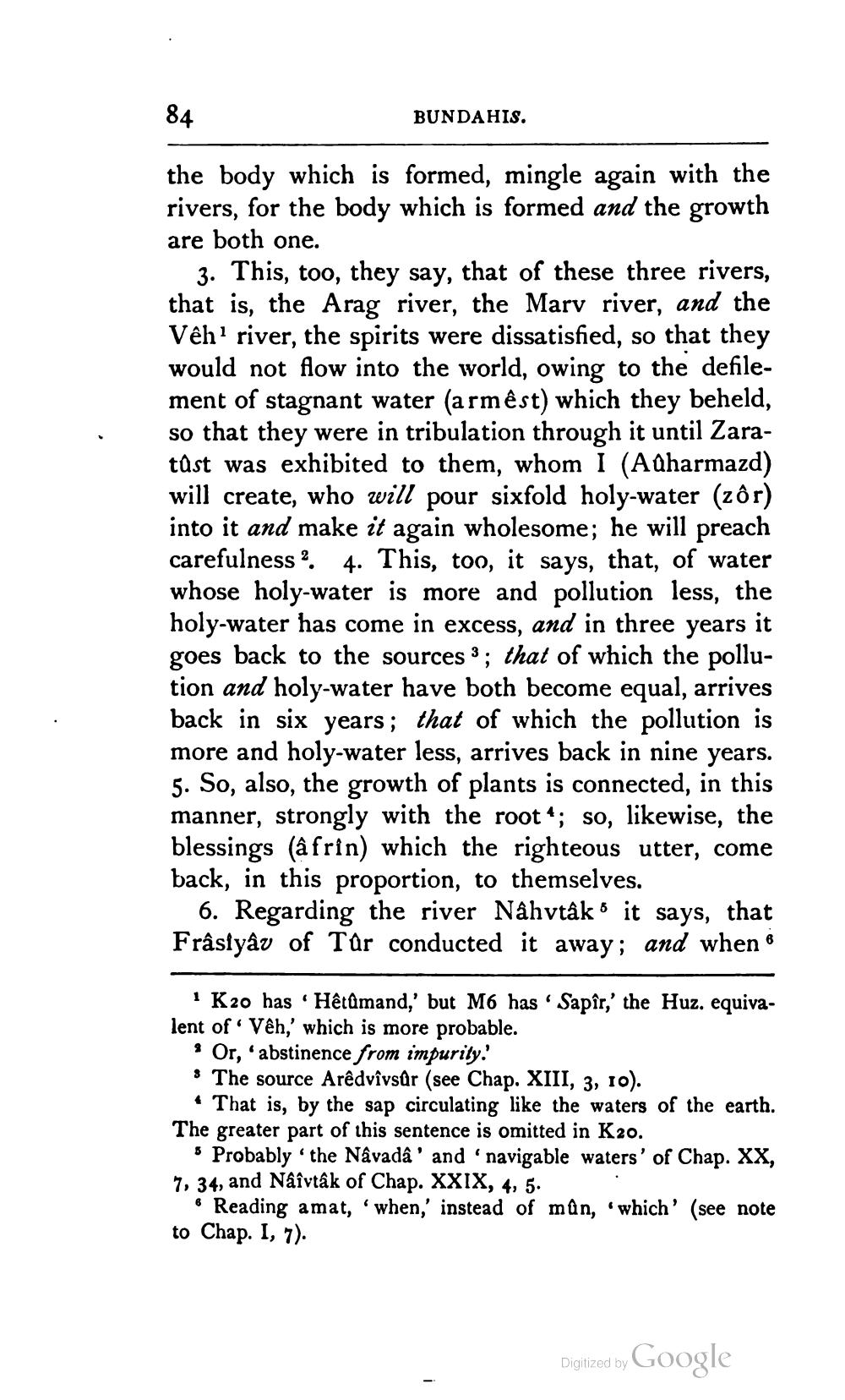________________
BUNDAHIS.
the body which is formed, mingle again with the rivers, for the body which is formed and the growth are both one.
3. This, too, they say, that of these three rivers, that is, the Arag river, the Marv river, and the Vêh' river, the spirits were dissatisfied, so that they would not flow into the world, owing to the defilement of stagnant water (armêst) which they beheld, so that they were in tribulation through it until Zaratast was exhibited to them, whom I (A dharmazd) will create, who will pour sixfold holy-water (zôr) into it and make it again wholesome; he will preach carefulness 2. 4. This, too, it says, that, of water whose holy-water is more and pollution less, the holy-water has come in excess, and in three years it goes back to the sources 3; that of which the pollution and holy-water have both become equal, arrives back in six years; that of which the pollution is more and holy-water less, arrives back in nine years. 5. So, also, the growth of plants is connected, in this manner, strongly with the root"; so, likewise, the blessings (âfrin) which the righteous utter, come back, in this proportion, to themselves.
6. Regarding the river Nähvtâk 5 it says, that Frâsiyâv of Tûr conducted it away; and when 6
K20 has · Hêtûmand,' but M6 has · Sapîr,' the Huz. equivalent of Vên,' which is more probable.
* Or, 'abstinence from impurity.' * The source Arêdvîvsûr (see Chap. XIII, 3, 10).
• That is, by the sap circulating like the waters of the earth. The greater part of this sentence is omitted in K20.
s Probably the Navadâ' and 'navigable waters' of Chap. XX, 7, 34, and Naivtâk of Chap. XXIX, 4, 5.
* Reading amat, when,' instead of mûn, which' (see note to Chap. I, 7).
Digitized by Google




